The Meizu MX4 Pro Review
by Andrei Frumusanu on February 16, 2015 2:00 AM EST- Posted in
- Smartphones
- Exynos
- Mobile
- Meizu
GPU Performance
The Exynos 5430's Mali T628MP6 at 600MHz should be a predictable test candidate now that we have scores from Note 4's Exynos 5433 and Huawei's Kirin 920 devices. The MX4 Pro should perform slightly worse than the 5433. Meizu maintains the ALU load percentage based scaling logic that I've covered in the Note 4 Exynos review, meaning that ALU heavy loads allow the GPU to scale up to 600MHz while more traditional loads will limit the GPU to 550MHz.
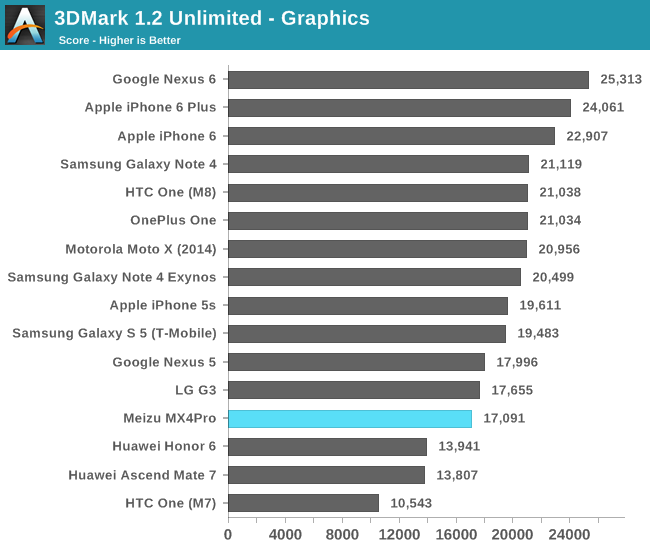
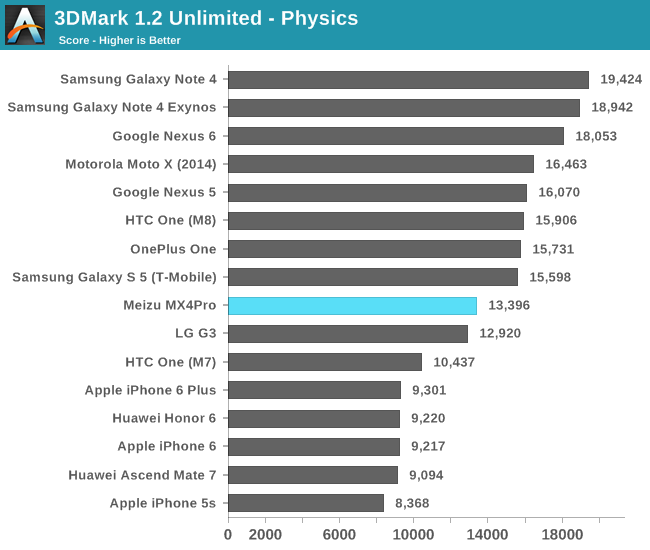
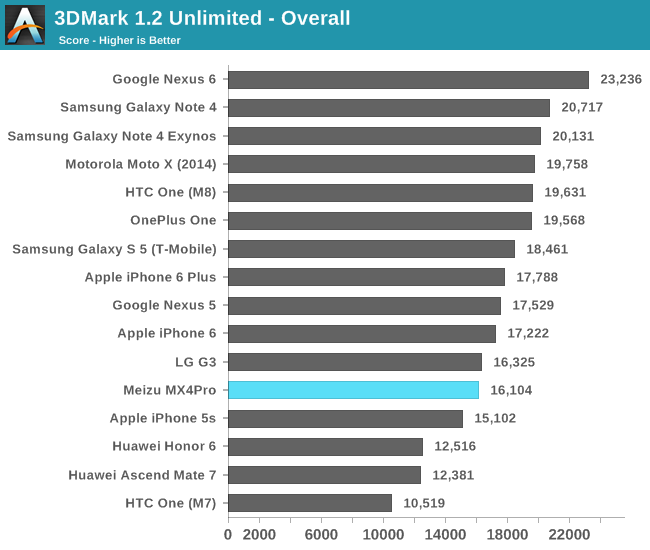
In the 3DMark Unlimited Graphics test we see how the Mali lands more or less where we expected it, worse than the Note 4 and better than the Huawei units. The physics score is still a strongly CPU-bound test and the weaker A7 cores of the 5430 are what is used during most 3D loads.
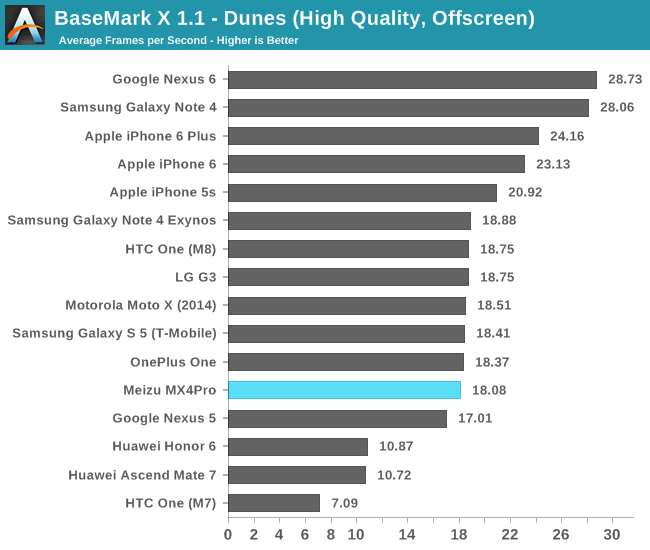
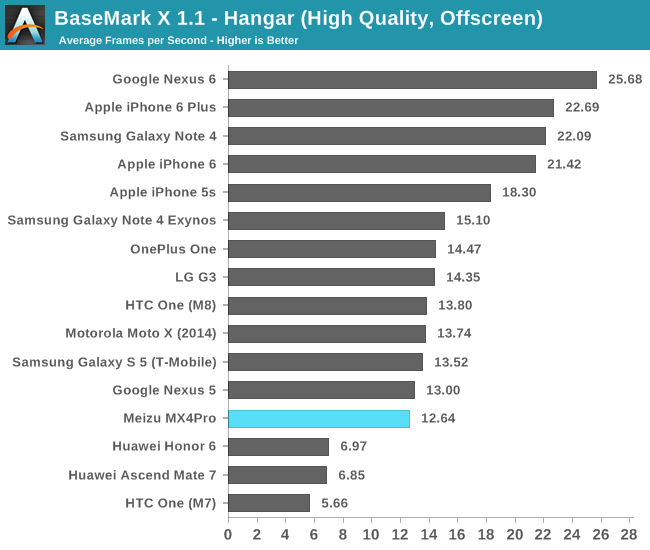
As we move on to BaseMark X, we're getting into more pure 3D loads that are not as affected by CPU speeds. Here we see the Mali T628MP6 outperform the Kirin 920 by much more than what we would expect from 50% more cores on the MP4 configuration. I've mentioned in the Note 4 review that Samsung has dedicated and added a lot of cache in the Mali's in the 543X Exynos SoCs, and this delta might very well be a result of the modified implementation. The MX4 Pro is on the heels of Adreno 330 devices.
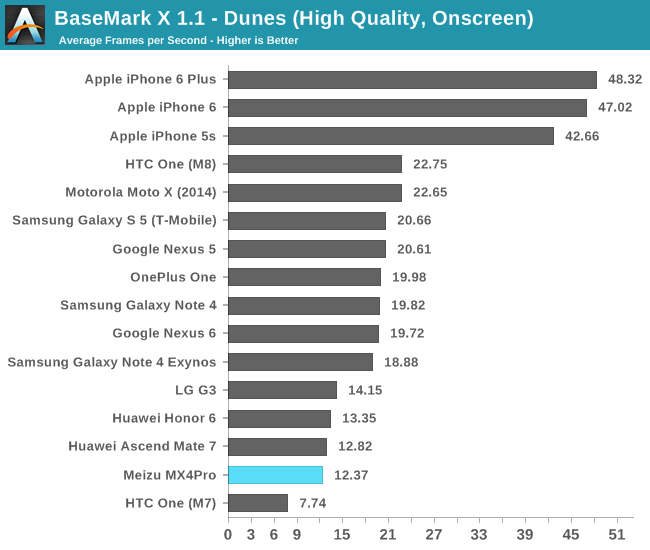
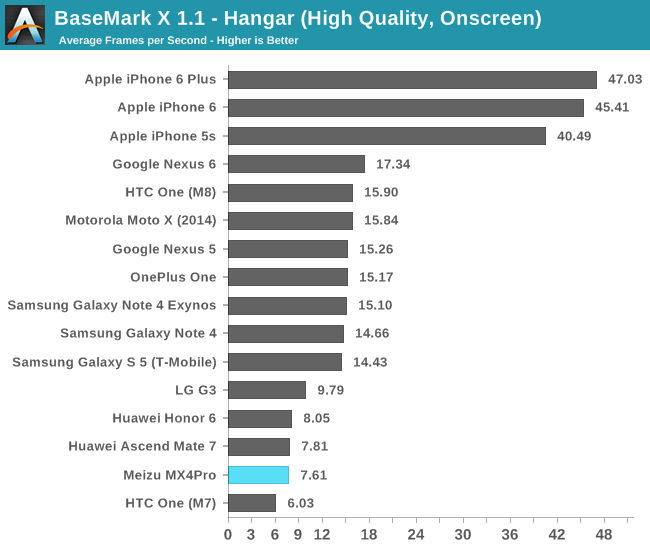
The higher-than-QHD resolution of the MX4 Pro drags down the on-screen scores by a significant amount. There seems to be a bandwidth bottleneck here as the device doesn't manage to outperform the Kirin devices.
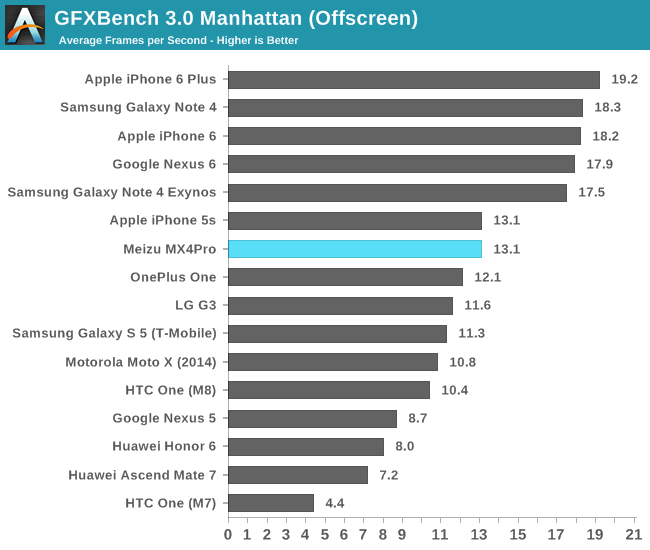
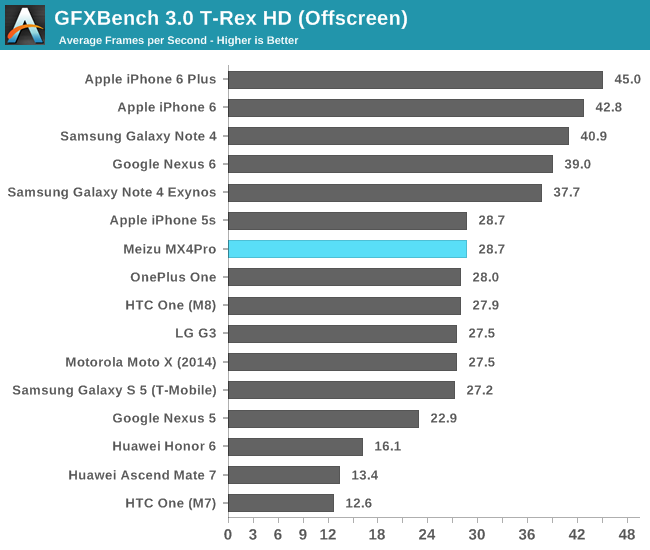
The Manhattan and T-Rex off-screen scores again put the Exynos 5430 at the level of the Adreno 330.
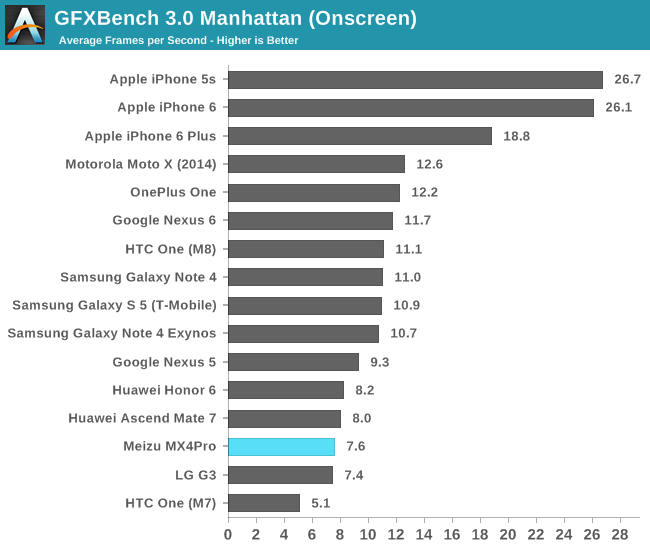
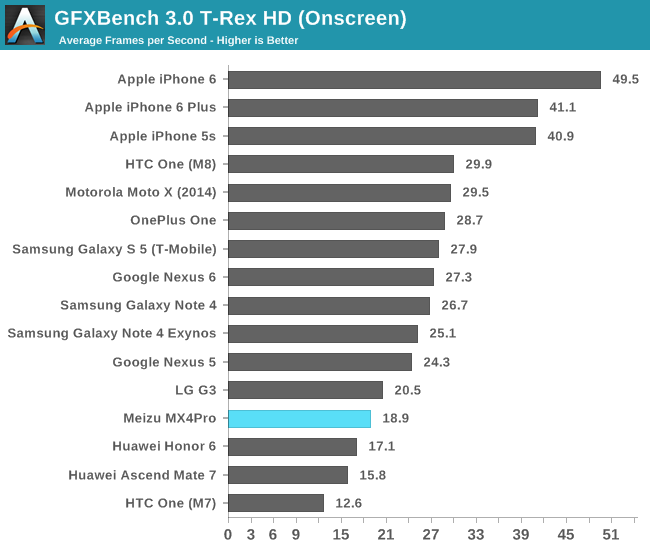
The onscreen scores again reverse the scores and put the Mali at a greater disadvantage. It seems while the Exynos 5430 is able to properly keep up at 1080p resolution, the performance degradation when switching to 1560p is quite large.
GPU Power
The Note 4 review started something that I hope to continue in the future whenever a device allows me to do a full power analysis. The MX4 Pro is luckily one of those devices, and I was able to measure some interesting figures that I'll be getting into more in the battery life section. For now, I present some isolated GPU power figures employing the same methodology that I've used for the Exynos 5433, meaning the system is limited to the little cores and the device's screen power is subtracted from the off-screen tests of GFXBench.
While the MX4 Pro and the Galaxy Alpha both employ the same SoC, the rather massive difference between the two comes from the fact that my Alpha test unit had the second-worst chip bin possible, having much higher voltages than what the MX4 Pro is running on its Exynos 5430. My Meizu unit has a median-tier bin, which is something that a larger amount of people should be able to enjoy. On average we see a 62.5mV voltage drop throughout all the GPU frequencies.
The end result is that the MX4 Pro roughly consumes a full 1W less than the Alpha. Shaving off 25% of power consumption just by having a different chip bin demonstrates how volatile device benchmarking can be, as the review units we receive can be very different to what another site tests, not to mention user devices. As I continue to collect more data I hope that we can do a full competitive analysis of the SoC market in the future.











70 Comments
View All Comments
velanapontinha - Tuesday, May 26, 2015 - link
Hi, Andrew.Any ETA on the review of the "regular" MX4? MWC is long over.
AnandTech still doesn't have one single review to a Mediatek based device. Mediatek is no longer a Cyrix kind of thing, you guys should give it the spotlight it is starting to deserve.
pjcamp - Monday, February 16, 2015 - link
I'm baffled at how you guys can find time to review these obscure Chinese knock-off phones, but apparently can't manage to review a Sony.techcrazy - Monday, February 16, 2015 - link
It's Sony's fault. Andrei asked for a review unit but it looks like they didn't provide any review unit.http://www.anandtech.com/show/8655/the-huawei-asce... . Look at the comment section.
sonny73n - Wednesday, February 18, 2015 - link
Sony would never dare to let an unbiased tech site like AT to review their devices. Sony devices may look nice but if you take in depth approach into them, you'll surely be disappointed. Take a few flagships Sony has released just a couple of years back for examples - the ZR, ZL and Z1, all were made with TFT panels. And the recent Z3C isn't so good either - with so many reports of self-cracked front and back glass. Need I say more?notposting - Monday, February 16, 2015 - link
Regarding the plastic insets on the metal band -- aren't those generally used to separate discrete external antenna bands (like the iPhone 4 and so on)?xaueious - Monday, February 16, 2015 - link
The review is not really useful without reviewing the Marvell basebandSubmano - Monday, February 16, 2015 - link
Great review as the one with the Note 4 Exynos! On a side note, are you Andrei Lux from XDA? Cheerscjs150 - Monday, February 16, 2015 - link
I think I can answer the question why phone makers omit the microSD (and tablet makers).It is so they can rip the customer off by massively overcharging for additional memory. A 64Gb MicroSD card costs c. £25 whereas upgrading Nexus 6 from 32Gb to 64Gb costs £90 (Iphone 6 16G to 64G is an extra £80), tablets are the same.
PC Perv - Monday, February 16, 2015 - link
I really appreciate the power consumption section. I totally agree with you that we need some legitimate methodology for batter performance under mobile data (esp. LTE) Literally everyone experiences different battery performance using same devices because of different signal quality.I think it would be very helpful if you explain in a separate article as to when/how/why battery drains using mobile data? Are their differences between carriers? Or is it spectrum-bound? How much signal strength matter? Etc.
I also appreciate that you went a length to experiment with the power saving modes. A lot of people seem to use power saving mode without knowing what it does, hoping their devices last longer. Not only you gave us explanation on this phone's implementation but you also measured the efficiency of it - It is something I want to know in many phone reviews but reviews never explored it. I cannot thank you enough.
Keep up the good work!
croc - Monday, February 16, 2015 - link
Lesseeee... Known taps into every comms link going through the USA, and you are wondering if a China-made device has a backdoor? You have a strange set of priorities, my friend...